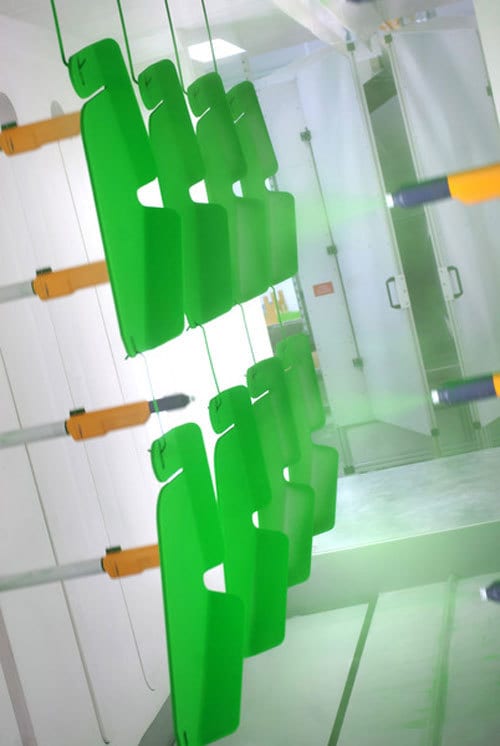Ready to proof -- Clare 6/2/23
CB proofed 6/8
KJ proofed 6/8 - Ready for author
How Businesses Can Reduce Energy and Further Improve Sustainability in Their Powder Coating Lines
Photo courtesy of Akzo

Processing Power!
By Andy Cowling, Technical Service Manager, AkzoNobel Powder Coatings
Businesses with a powder coating line are already enjoying the sustainability benefits that powder coatings can bring in terms of reduced waste and the absence of volatile organic compounds. They can also enjoy further benefits when it comes to energy by making simple changes to their production processes, or their choice of product. So where do you start?
In order to monitor and measure success, the first step is to benchmark where you currently stand. With expert advice you can optimize every stage of the coating process, from initial line loading and pretreatment, to application and curing.
Saving at the Preteatment Stage
Energy is consumed at various stages of the pretreatment process. Even small changes can all add up to making a big difference. If using a mechanical pretreatment method such as shot or grit blasting, for example, checking for leaks in the compressed air supply lines can help minimize energy losses.
When it comes to chemical pretreatment, the substrate you are coating, and the surface treatment you are using, will all impact the energy you consume. Consulting with your pretreatment supplier about new innovations that could enable you to reduce the energy used in your process is a sensible step. If using any stages that require surface treatment above ambient temperature, consider how to ensure these stages are sufficiently insulated to prevent the unnecessary and costly loss of heat. And when spraying, set the pumps to be triggered on only when material is passing through the treatment stage.
In the drying oven, setting the temperature to the minimum required to achieve the appropriate drying time will help save energy, as will ensuring the oven is regularly maintained with efficient air circulation, and oven entry and exit openings have air seals to minimize heat loss.
Reducing Energy in the Coating Booth
The energy consumed within the coating booth can be optimized in various ways. Again, checking for leakages in the supply of compressed air is a must, and better scheduling can reduce the number of booth cleans required.
Devising an effective part loading schedule to ensure your line fill is optimized is also advised, and automatic gun triggering can help ensure powder guns only spray when material is directly passing.
Opportunities in the Curing Oven
The temperature and time required to cure coated components varies depending upon the material type, size, and thickness. Businesses can optimize oven temperature by using similar products or substrates for a particular run, if possible, which allows them to optimize the oven temperature to achieve the perfect cure depending on the thickness of the metal being coated and the time in the cure oven.
Diligent use of the technical datasheets will help teams evaluate the optimum curing temperature and time, while conducting internal quality controls will help ensure the film is fully cured.
Businesses can optimize energy consumption by using different powder coatings that have been innovated specifically to support a more sustainable operation. These include, but are by no means restricted to, such low-energy powder coatings as Interpon 610 Low-E, Interpon ACE Low-E, and Interpon 700 HR. Further reductions in energy can also be achieved by switching from two-layer coating systems to single-coat systems.
Optimize Energy Sources
Recognizing the efficiencies that you are making means first being able to accurately measure the energy your powder coating process consumes, independent of other processes on your site. To do this means installing measurement devices such as meters to measure gas flow, ideally for each burner, or measurement of compressed air consumption for individual compressors.
Production planning should be reviewed to try to minimize energy waste. This can be done in a number of ways, such as scheduling to minimize color changes or running of similar material types, or scheduling lowest cure products together to allow optimized cure temperature setting.
If you would like further advice on how to make the most out of your processing lines, from optimizing the oven curve through to the balancing of the oven temperature, speak to one of AkzoNobel’s Technical Service team, and visit https://powder.interpon.com/true-sustainability/energy-saving/.